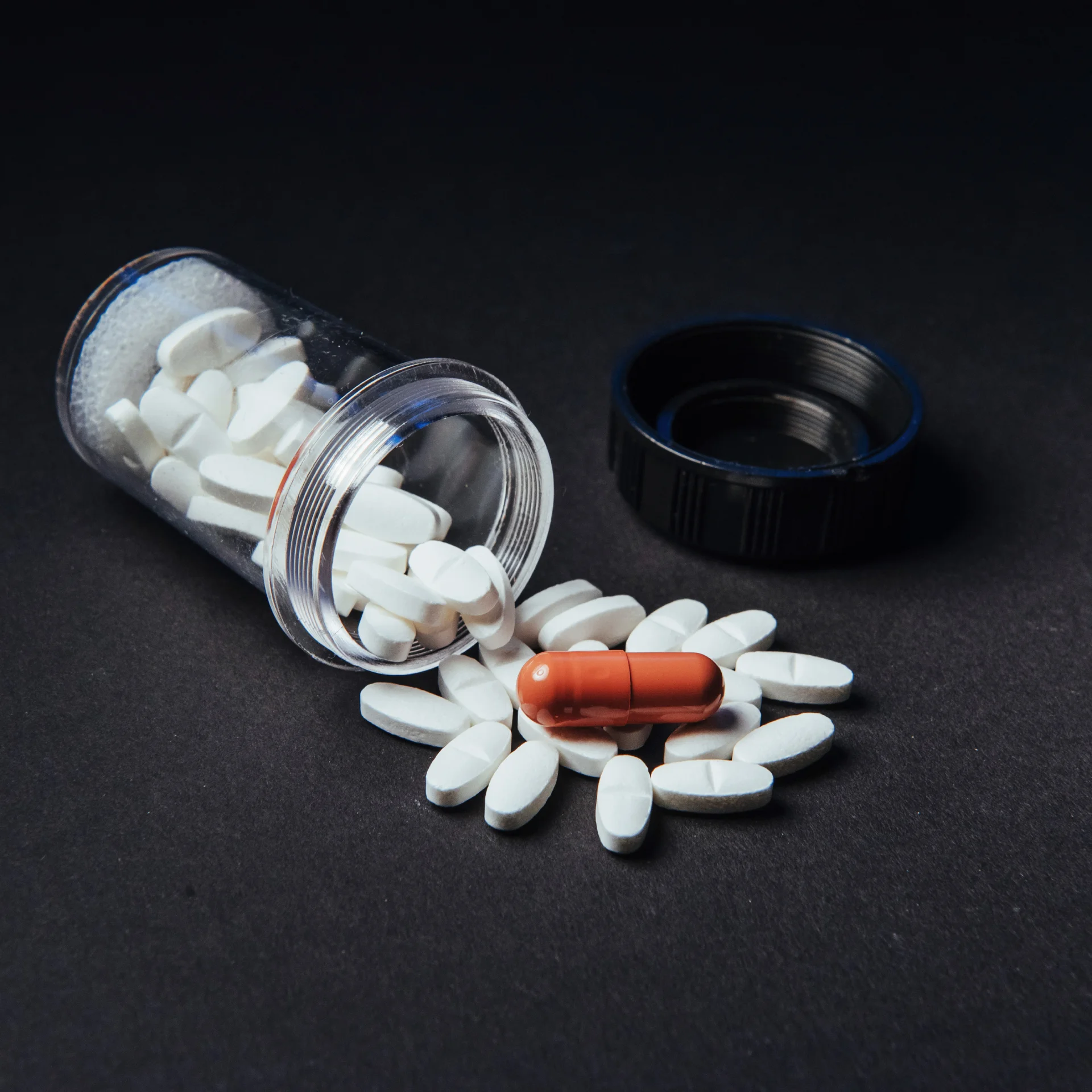Trazodone Addiction Treatment in Long Island
Clear, stigma-free guidance on trazodone dependence, discontinuation symptoms, safer tapering, therapy supports, harm-reduction, and how to match Long Island care levels via a connector that vets evidence-based programs.
Covered by most insurance plans
Available to help you 24/7
Table of Contents
Trazodone is a SARI, short for serotonin antagonist and reuptake inhibitor. It is prescribed for major depressive disorder and is widely used off label as a sleep aid. By modulating serotonin and indirectly influencing noradrenergic tone, it can reduce depressive symptoms and promote sleep. Although often described as non addictive, long courses, dose escalations, and unsupervised use can lead to physiological dependence, difficult discontinuation, and patterns of misuse. Long Island Addiction Resources helps you compare trusted programs near you that fit your needs and insurance. We are a connector and guide, not a treatment facility.

Trazodone at a Glance
Trazodone does not typically produce classic cravings or euphoria like opioids or stimulants. Dependence can still occur when the body adapts to steady dosing, and psychological overreliance can develop if it is used to cope with stress, to knock out at night, or to counter other substances. Sudden dose changes can trigger uncomfortable withdrawal or discontinuation symptoms.
Common Side Effects
- Daytime sleepiness, dizziness, fatigue, dry mouth
- Stuffy nose, blurred vision, gastrointestinal changes such as diarrhea or constipation
- Weight change and sexual dysfunction
Serious Red Flags that Need Prompt Medical Care
- Worsening depression or suicidal thoughts
- Confusion or hallucinations
- Significant bleeding or easy bruising, severe rash
- Low sodium symptoms such as confusion or seizures
- Prolonged or painful erection, chest pain, heart rhythm changes

Risks with Long Term or Misguided Use
- Physiological dependence and challenging discontinuation
- Serotonin syndrome risk when combined with other serotonergic agents
- Cardiac arrhythmias or liver enzyme elevations are uncommon but consequential
- Coordination problems, psychomotor agitation, vision issues
- Overdose risks heightened with alcohol, benzodiazepines, opioids, or other sedatives
Dependence and Withdrawal
Stopping trazodone abruptly can produce a range of symptoms as the central nervous system re balances. People may experience rebound insomnia, anxiety, agitation, mood swings, headache, nausea, dizziness or vertigo, brain zaps, sweating, concentration problems, fatigue, and muscle aches. In severe cases intrusive suicidal thoughts or manic symptoms may occur. Duration varies with dose, length of use, and individual factors. Many physical symptoms ease within one to two weeks, while sleep and mood can fluctuate for weeks to months without a guided taper.
Safer Discontinuation with Clinical Support
- Do not quit cold turkey. Use a prescriber guided, symptom paced taper with small scheduled reductions. Liquid or split tablet strategies can help.
- Adjust the pace if discontinuation symptoms emerge. Hold or step back as needed.
- Monitor sleep, mood, vitals, and safety. Avoid alcohol and sedative co use.
- Consider short term non sedative supports and sleep hygiene strategies as clinically appropriate.
Care Levels on Long Island
- Outpatient medication management Regular prescriber follow ups to plan and monitor a taper. Best for stable cases with strong supports.
- Intensive Outpatient and Partial Hospitalization Structured daytime therapy with medical oversight for complex symptoms, co occurring disorders, or higher relapse risk.
- Inpatient or residential Twenty four hour care for severe mood instability, suicidality, polysubstance use, or medical concerns.
Therapies That Strengthen Recovery
- Cognitive Behavioral Therapy Builds sleep routines, thought restructuring, and relapse prevention skills.
- Dialectical Behavior Therapy skills Emotion regulation, distress tolerance, and interpersonal effectiveness during taper stress.
- Motivational interviewing Clarifies goals and increases confidence for change.
- Group therapy and peer support Reduces isolation, normalizes symptoms, and offers practical strategies.
- Family involvement Education and boundary setting to limit enabling and support healthy routines.
Harm Reduction While Transitioning
- Use one prescriber and one pharmacy. Keep medications secured. Avoid mixing with alcohol, benzodiazepines, or opioids.
- Change one variable at a time such as dose, timing, or adjunct therapy.
- Anchor routines with consistent sleep and wake times, hydration, nutrition, daylight movement, and screen down time before bed.
Aftercare and Relapse Prevention
- Written plan Early warning signs, coping steps, and crisis contacts.
- Scheduled follow ups Mood and sleep checks for several months after taper.
- Peer and community supports Skills groups, recovery communities, or clinician led booster sessions.
Find Help on Long Island
Recovery is challenging and achievable. The right match between clinical needs, level of care, and personal preferences makes a real difference. Long Island Addiction Resources connects you with vetted programs across levels of care such as medical detox, residential treatment, partial hospitalization, intensive outpatient, standard outpatient, and recovery housing.
Start today
If you or a loved one are ready to end your alcohol and drug use, there are many recovery options available near you in Long Island
Are you ready to take back control over your life?
Making the decision to seek help is one of the hardest and bravest steps you can take. We know that the recovery process is not always easy—there may be challenges along the way—but every step forward brings you closer to a life free from the weight of addiction.
Find treatment options covered by insurance















Let today be
your Day 1
We'll get on a call, assess your health history, and verify your insurance. Today is Day 1. We can't wait to celebrate Day 1000 with you!
Fill out this simple form and we’ll call you right back.
Frequently Asked Questions
We'll get on a call, assess your health history, and verify your insurance. Today is Day 1. We can't wait to celebrate Day 1000 with you!
Is trazodone “addictive” or just habit-forming?
It rarely causes classic drug-seeking, but physiological dependence and psychological overreliance are common with long-term, high-dose, or unsupervised use.
How should I stop trazodone safely?
With a prescriber-guided taper. Reduce slowly, pause if symptoms surge, and avoid alcohol or other sedatives during the process.
Can trazodone interact dangerously with other meds or alcohol?
Yes. Combining with alcohol, benzodiazepines, opioids, or other sedatives increases sedation and breathing risks; stacking serotonergic meds can raise serotonin-syndrome risk.
What if sleep crashes when I taper?
Use CBT-I–style sleep routines (consistent schedule, wind-down, light control), adjust taper pace, and discuss short-term non-sedative supports with your clinician.
How do I choose the right Long Island program?
Start with an assessment, then match severity and safety needs to level of care (outpatient, IOP, PHP, inpatient). A connector service can help compare vetted, evidence-based options that fit your goals and insurance.
